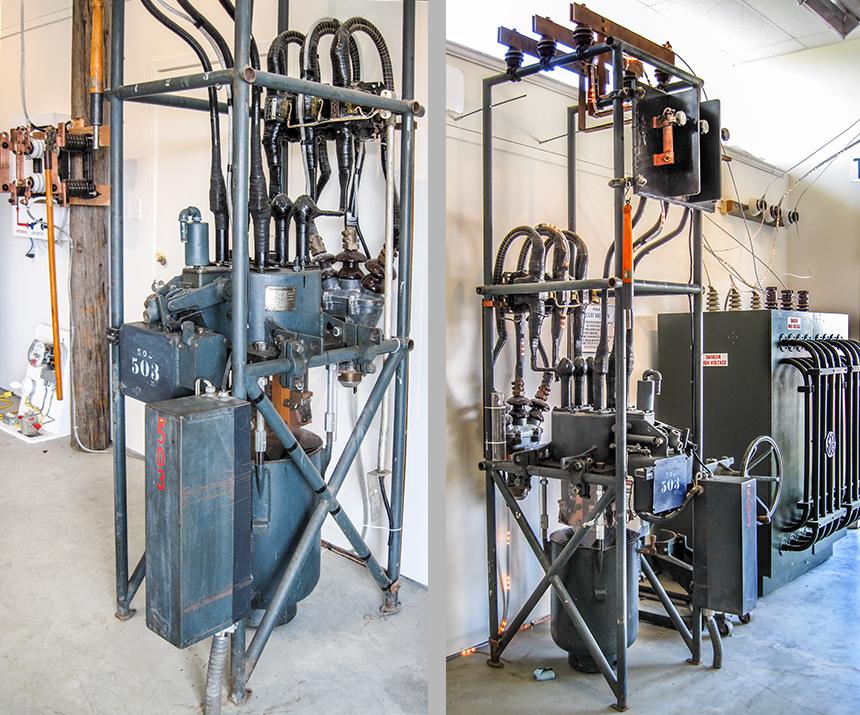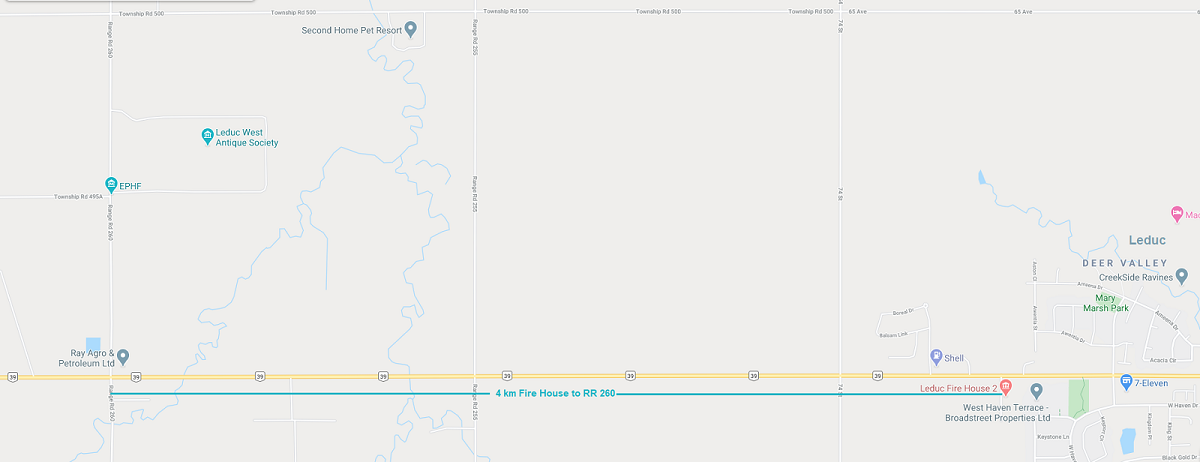
1937 Westinghouse Circuit Breaker
Oil circuit breaker No. 503
On display at the museum is an oil circuit breaker (OCB) from 1937. The function of a circuit breaker in a substation is fundamentally the same as the circuit breakers in your home in your electrical panel. If an overload (short circuit e.g.) occurs on a circuit, the circuit breaker will automatically trip to prevent damage to wiring, electrical plant, and personnel. In a substation, the voltages and currents being interrupted are vastly greater than encountered in a home electrical panel, so more robust technologies are required to break the flow of electricity. In an OCB, the oil acts to quench the arc and break the circuit. The insulating oil used is typically transformer oil that has much better dielectric strength than air. The heat produced by the arc vaporizes the oil, producing a hydrogen gas bubble surrounding the arc. The pressure of the oil compresses the gas bubble increasing its dielectric strength which then extinguishes the arc.
The OCB in our collection is an interactive display, meaning that guests can manually open and close the breaker. The oil has been drained and the tank dropped so the action taking place inside the OCB can be easily observed.
| Manufacturer: | Westinghouse |
| Type: | Oil Circuit Breaker (OCB) |
| Voltage: | 4160/2400 |
| Insulation Class: | 5KV |
| Location: | 500 Sub 82 1/2 AVE and 104 1/2 ST |
| Year: | 1937 (was in service during WW2) |
| Outside 500 Substation | Inside Substation: 6 breakers connected to open bus Photo taken March 20, 1999 |
